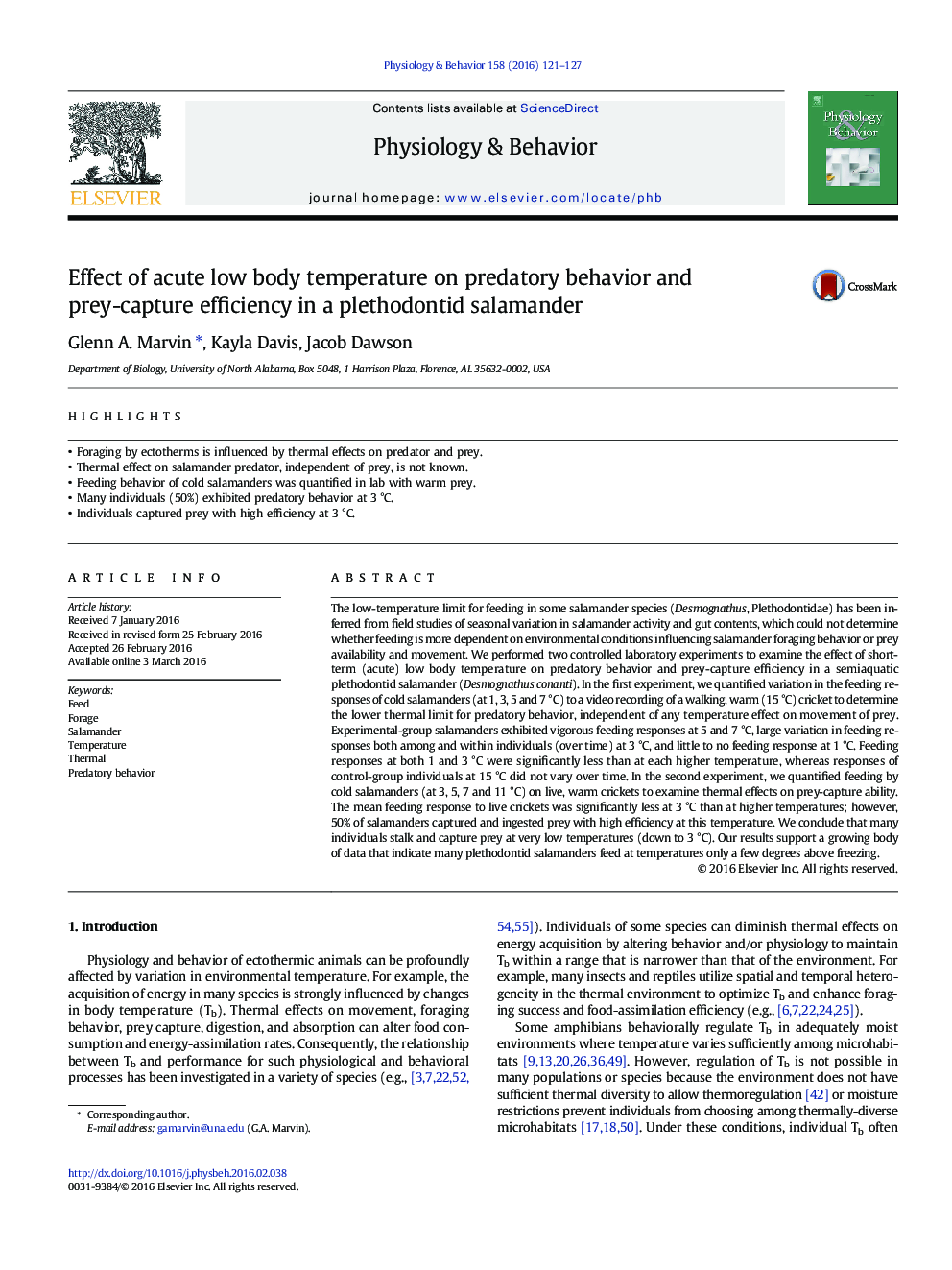| کد مقاله | کد نشریه | سال انتشار | مقاله انگلیسی | نسخه تمام متن |
|---|---|---|---|---|
| 2844058 | 1571160 | 2016 | 7 صفحه PDF | دانلود رایگان |
• Foraging by ectotherms is influenced by thermal effects on predator and prey.
• Thermal effect on salamander predator, independent of prey, is not known.
• Feeding behavior of cold salamanders was quantified in lab with warm prey.
• Many individuals (50%) exhibited predatory behavior at 3 °C.
• Individuals captured prey with high efficiency at 3 °C.
The low-temperature limit for feeding in some salamander species (Desmognathus, Plethodontidae) has been inferred from field studies of seasonal variation in salamander activity and gut contents, which could not determine whether feeding is more dependent on environmental conditions influencing salamander foraging behavior or prey availability and movement. We performed two controlled laboratory experiments to examine the effect of short-term (acute) low body temperature on predatory behavior and prey-capture efficiency in a semiaquatic plethodontid salamander (Desmognathus conanti). In the first experiment, we quantified variation in the feeding responses of cold salamanders (at 1, 3, 5 and 7 °C) to a video recording of a walking, warm (15 °C) cricket to determine the lower thermal limit for predatory behavior, independent of any temperature effect on movement of prey. Experimental-group salamanders exhibited vigorous feeding responses at 5 and 7 °C, large variation in feeding responses both among and within individuals (over time) at 3 °C, and little to no feeding response at 1 °C. Feeding responses at both 1 and 3 °C were significantly less than at each higher temperature, whereas responses of control-group individuals at 15 °C did not vary over time. In the second experiment, we quantified feeding by cold salamanders (at 3, 5, 7 and 11 °C) on live, warm crickets to examine thermal effects on prey-capture ability. The mean feeding response to live crickets was significantly less at 3 °C than at higher temperatures; however, 50% of salamanders captured and ingested prey with high efficiency at this temperature. We conclude that many individuals stalk and capture prey at very low temperatures (down to 3 °C). Our results support a growing body of data that indicate many plethodontid salamanders feed at temperatures only a few degrees above freezing.
Journal: Physiology & Behavior - Volume 158, 1 May 2016, Pages 121–127
